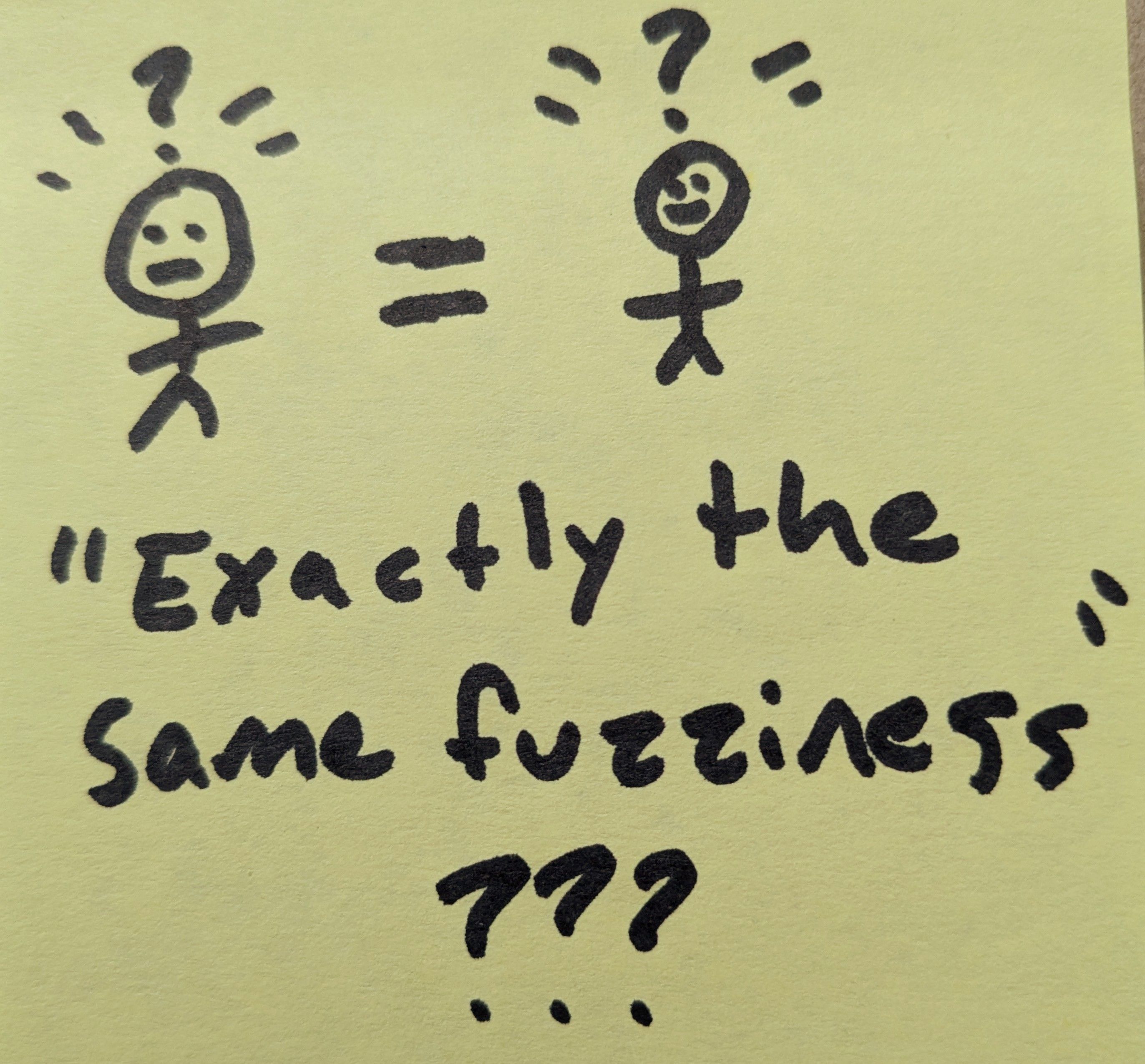Can vague objects be identical to one another?
"Nope. Why do you ask?"
Jump to section titled: "Nope. Why do you ask?"In "Vagueness in the World," the ontic vagueness-focused chapter of his well-known Vagueness, Timothy Williamson writes:
"Objects are identical only if their boundaries have exactly the same fuzziness." (Williamson, ch 9)
But the idea of “exactly the same fuzziness” does not hold water for the sort of fuzziness where even self-identity loses meaning.

Ontic vagueness (as it arises in the argument from freedom) means that in the physical world there is no self-identical feature of nature. That is, there is no A in the domain of the physical world, such that A=A. If that is correct, whenever you write something about reality using a symbol like A, your statement can only be approximately true, because you have idealized A as possessing the quality of self-identity. That is, you have "idealized away" it's vagueness.
The idea that two vague objects can be identically vague in this context is flawed in much the same way as the playground idea that “infinity plus one” is bigger than infinity. Just as two counting number infinities are the same regardless of whether one adds different finite numbers to each one, vague objects can never be identical to one another.
More about this proposed "Property of Non-Transitivity" in section 4.1 of Ontic Vagueness: The Argument from Freedom.
Links
Jump to section titled: Links- Open access PDF Ontic Vagueness: The Argument from Freedom
- Kindle version Ontic Vagueness: The Argument from Freedom
License
Jump to section titled: LicenseCopyright © Adam Weisberg (2025) Creative Commons Attribution Non Commercial No Derivatives 4.0 International
- ← Previous
Is atheism about reality? - Next →
How to read ¬∃A(A=A)